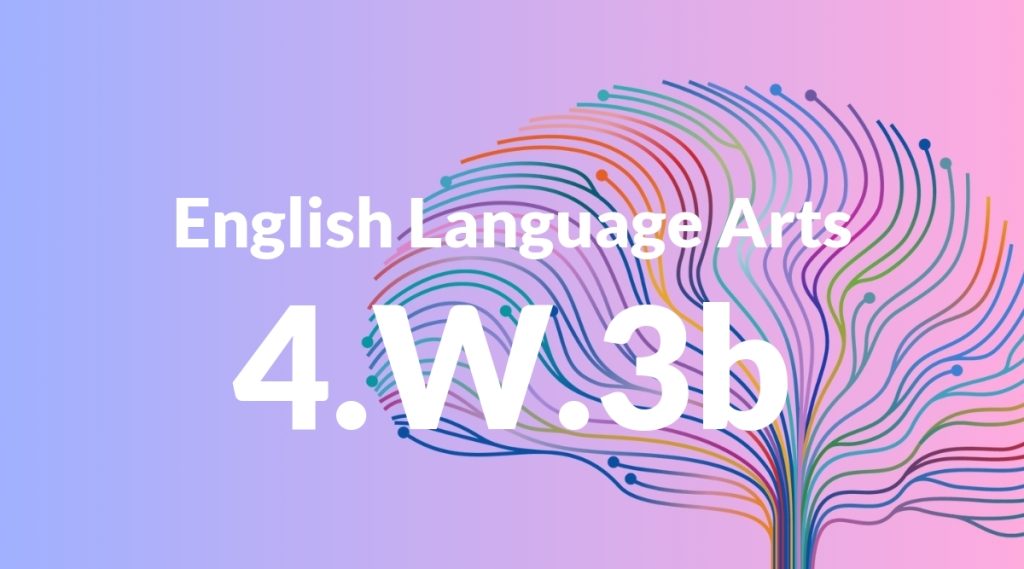Standard: 4.W.3b – Use dialogue and description to develop experiences and events or show the responses of characters to situations.
Grade level: Grade 4
Subject: English Language Arts
Domain: Writing
Teacher Overview
This standard emphasizes the use of dialogue and description to enrich narratives by developing experiences and events or showing characters’ responses to situations. It is crucial for students to learn how to use these tools effectively to create engaging and dynamic stories. Students should already be comfortable with writing basic sentences and simple narratives, as well as understanding character development.
After mastering this standard, students will be able to write more complex and engaging narratives, using dialogue and description to enhance their storytelling.
Common Misconception 1
A common misconception is that dialogue is only for character conversations. This is incorrect because dialogue can also reveal a character’s thoughts and feelings, adding depth to the narrative.
Intervention 1
Use mentor texts that showcase characters’ inner thoughts through dialogue and have students practice writing similar examples.
Common Misconception 2
Another misconception is that descriptions should only focus on physical appearances. This limits the richness of the narrative, as descriptions can also convey emotions, settings, and actions.
Intervention 2
Provide examples of descriptive writing that includes emotions, settings, and actions. Have students practice writing descriptions that go beyond physical appearances.
Prerequisite Knowledge
Students should understand basic sentence structure, have experience writing simple narratives, and be familiar with basic character development concepts.
Subsequent Knowledge
Students will develop skills in crafting more complex narratives, including the use of various literary devices and advanced dialogue techniques.
Instructional Activities
- Have students write a short story focusing on a dialogue between two characters.
- Create a comic strip where characters interact through dialogue.
- Write a diary entry from a character’s perspective, including dialogue and descriptions of events.
- Develop a script for a short play, emphasizing dialogue and character responses.
- Conduct a peer review session where students give feedback on each other’s use of dialogue and description.




